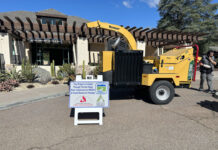A lawsuit filed on March 4 in California Superior Court by attorneys from LiMandri & Jonna LLP, representing The Chaldean Coalition against the county of San Diego, its Independent Redistricting Commission, and its Registrar of Voters aims to reunite the Chaldean community, split up by the recent approval of new county districts. The complaint labels the redistricting actions and resulting maps as illegal under the California Election Code, which incorporates other state and federal statutory and constitutional law.
The current county district map expanded County Supervisor Nathan Fletcher District 4 in including La Mesa, Lemon Grove, Spring Valley, and Rancho San Diego, taking these areas from District 2 Supervisor Joel Anderson.
Attorney Paul M. Jonna, partner at LiMandri & Jonna LLP, said the new boundaries split the Chaldean religious and ethnic group living in East County right down the middle. He said it is asking that the Court make the Redistricting Commission redraw the maps to include Rancho San Diego, an unincorporated part of El Cajon, back into District 2 or revert to the County’s 2011 redistricting map.
The lawsuit details how the redistricting violates the “communities of interest” provisions in the Election Code, which codify into the redistricting process the Equal Protection guarantees of the California Constitution.
“This case is not about political parties,” stated Chaldean Coalition President Vince Kattoula in a press release. “This is about ensuring that all ethnic minority communities, including the Chaldean community, which have worked so hard to find a voice in the United States, are protected, respected and heard.”
Jonna said the Chaldean Coalition is a nonprofit corporation formed for the purpose of promoting the Chaldean community and its culture in the Western United States, and in particular, San Diego County.
“The Chaldeans are an ancient community from Iraq, a Catholic minority, their language Aramaic, and they have a large community in San Diego, around 50,000 that began immigrating here in the 1950s,” he said. “Their cathedral St. Peter Chaldean Diocese is based in Rancho San Diego, and overwhelmingly the community votes conservative in large part due to their traditional family values.”
In the lawsuit, arguments state that the “Chaldean community has now spread out to surrounding areas, with a particular emphasis on the city of El Cajon but including the cities of Santee and El Cajon to the northwest, the city of La Mesa to the west, and the communities of Spring Valley and Jamul to the south. The Chaldean community has also moved into the unincorporated communities of Winter Gardens, Lakeside, and Crest, which are census designated places in themselves, but like Rancho San Diego, use El Cajon Zip codes and addresses, making them part of the El Cajon region.”
Jonna said this was the first year that a citizen commission drew the commission boundaries, and that people predicted that this commission could be a “recipe for disaster” if you have people with little experience with the political process in dealing with this complicated task and could break up communities of interest, which was exactly what happened.
Jonna said Partnership for the Advancement of New Americans submitted a map, and that map was incorporated by the county early in the process. He said PANA prioritized the Black, Indigenous, People of Color community in its drawing of the map, which Jonna said was clearly a goal to break up the Chaldean community and dilute their vote due to their conservative ideals.
“They identified this entire region they thought District 4 should encompass,” he said. “Originally, they wanted to include El Cajon, but the Commission carved out Rancho San Diego, where their cathedral is located. There were many irregularities. The date when the draft map was released was earlier than supposed. There were people on the Commission who should have never been on it, and they were disqualified. Essentially, the law is clear. You are not supposed to break up communities of interest when redistricting.”
Jonna said when you have redistricting that dilutes the voting strength of a minority community, it becomes constitutionally suspect, even if unintentional.
“We are asking the court in this case to order the IRC to redraw these lines without splitting this community,” he said. “The thing I feel is most compelling is that doing this would make all the district lines better. If you look at the numbers, District 2 is currently the most underpopulated district. The new District 4 juts into District 2, which violates compactness principles, and it is overpopulated. If you take out Rancho San Diego from the new District 2, it improves the proportionality of these two districts, making them more equal, and protects this community of interest.”
Jonna said PANA was advocating for the BIPOC community and assumed that that community votes primarily Democrat whereas the Chaldean community you traditionally have more conservative voters.
“Moving them back into District 2 will actually benefit the minority voting power in District 4,” he said. “If the court is not inclined to ask the Commission to redraw the lines now, they could direct them to use the 2011 district map, which had smaller deviations between districts. That is another option we are going to give the court.”













